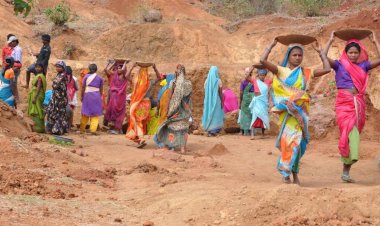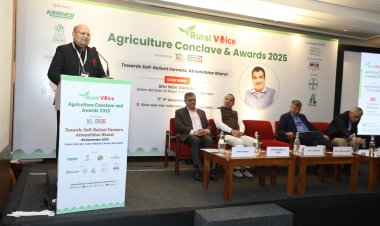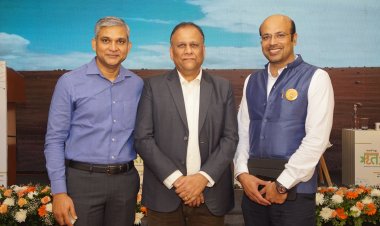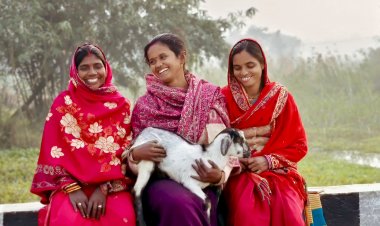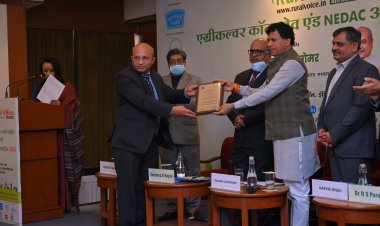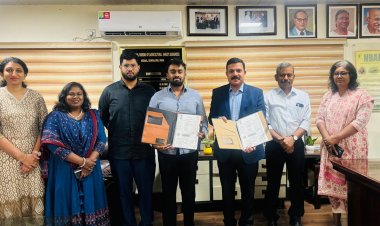Status quo in agriculture budget; hope from natural farming in Amrit Kaal
Despite the elections to the five State Assemblies being so close, the Budget has not announced for the farmers any alluring scheme with big allocation. Not only does it bypass any possibilities of an increase in the allocation for PM-Kisan but it also does not talk about the legal guarantee to MSP, the second most important demand of the farmers’ movement. Besides the reduction in the allocations for several schemes, there has been a massive cut in the provisions for food and fertilizer subsidies. The allocation for MNREGA has also been reduced by about Rs 25,000 crore.
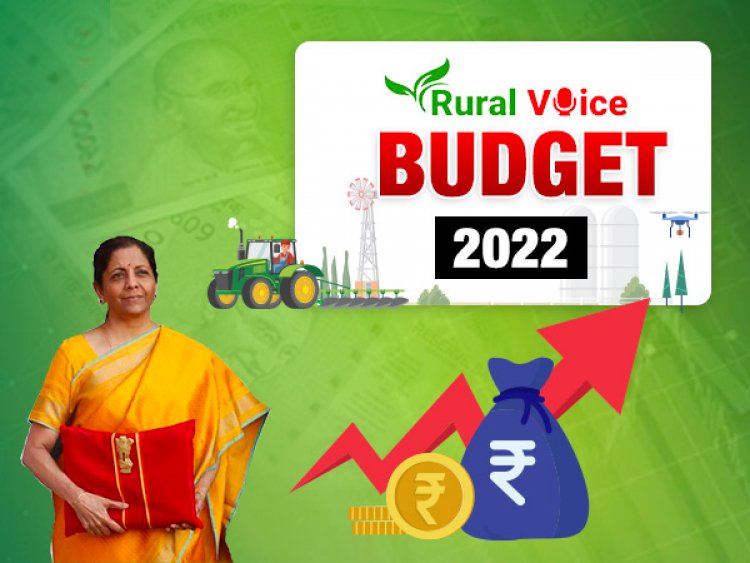
Finance Minister Nirmala Sitharaman has made an attempt to shatter several myths simultaneously in the Budget for the new financial year 2022-23 (FY23). She has presented an agenda for an improved Indian economy in the Amrit Kaal, the lead-up from India@75 to India@100, but it is not necessary that this strategy of hers may work for all. This year, as per Prime Minister Narendra Modi’s announcement, was supposed to attain the target of doubling the farmers’ income. But neither has anything of this sort happened nor did the Finance Minister mention any such thing while presenting the Union Budget on Tuesday. It is a separate issue that in her 2019-20 Budget three years ago, she had mentioned zero-budget farming to achieve this target, and she has emphasized chemical-free natural farming in the new Budget.
Despite the elections to the five State Assemblies being so close, the Budget has not announced for the farmers any alluring scheme with big allocation. Besides the reduction in the allocations for several schemes, there has been a massive cut in the provisions for food and fertilizer subsidies. The allocation for the Mahatma Gandhi National Rural Employment Guarantee Scheme (MNREGA) has also been reduced by about Rs 25,000 crore.
As far as the total expenditure announced for the Ministry of Agriculture is concerned, a provision of Rs 1,24,000 crore has been made in the budget for the coming financial year, which is a marginal increase on the Rs 1,18,294 crore in the Revised Estimates (RE) for the current year (FY22). This Budget talks about promoting innovation, technology, Kisan drones, millets, Farmer Producer Organizations (FPOs) and agritech start-ups. But a number of old central schemes have been stopped and several of them have instead been included under the Rashtriya Krishi Vikas Yojana (RKVY) and the Krishionnati Yojana (KY). All these are part of the provision mentioned above. For agricultural research and education, the Budget had made the same provision as that in RE FY22, which has been estimated at Rs 8,513.62 crore. That is, no increase has been made in the allocation for agricultural research. Also, there is no road map or support to farmers or extra allocation for natural farming that has been emphasized in the Budget.
Farmers and political analysts had hoped that there would be an increase in the allocation for PM-Kisan Samman Nidhi (PM-Kisan) in this Budget that comes on the eve of the Assembly elections in five states, including Uttar Pradesh (UP). That farmers would get at least Rs 9,000 per annum — an increase on the present Rs 6,000 per annum. This step would have brought relief to the small and marginal farmers and added to the vote share of the BJP. This scheme had been started in 2018, the year just before the Lok Sabha elections in 2019, in which the BJP had fully cashed in on it. But just before the most crucial elections this time around, the government has missed the opportunity to woo the farmers after the farmers’ movement and the repeal of farm laws.
PM-Kisan has the largest share in the budget for the Ministry of Agriculture and a provision of Rs 68,000 crore has been made for it in FY23 in comparison to Rs 67,500 crore in FY22. An amount of only Rs 100 crore has been allocated for Pradhan Mantri Kisan Mandhan Yojana, which had been started for farmers’ pension in a big way. A budgetary provision of Rs 10,433 crore has been made for the newly launched RKVY and Rs 7,183 crore for KY in the Budget for the new year. More than a dozen items like natural farming, organic farming, oil palm and promoting oilseeds production have been included under these two schemes.
This Budget is interesting in several ways and the Finance Minister has not felt the need to make things clear in her speech. For instance, the allocation for the Pradhan Mantri Fasal Bima Yojana (PMFBY) has been reduced from Rs 15,989.3 crore in RE FY22 to Rs 15,500 crore in the Budget Estimates (BE) for FY23. There has been a decrease in the number of farmers seeking insurance under this scheme and several states have exited the scheme, but the reduced allocation for the scheme that covers the farmers’ risks makes it clear that the government does not intend to promote it.
A provision of Rs 19,500 crore has been made for the interest subsidy given to farmers under the low-interest Kisan Credit Card (KCC) scheme. An interest subsidy of Rs 18,142 crore has been estimated under the scheme for the current year. Thus, one does not see the possibility of any massive increase in the loans provided under KCC. The allocation for MIS (PSS), a scheme that is resorted to when the crop prices fall, has been reduced from Rs 3,595 crore in FY22 to Rs 1,500 crore in FY23. For the Pradhan Mantri Annadata Aay Sanrakshan Abhiyan (PM-AASHA) that was proposed a few years ago as an alternative to the Minimum Support Price (MSP) mechanism to fetch better prices to the farmers, the allocation has been reduced from Rs 400 crore for the current year to merely Rs 1 crore.
There has been a relatively better increase in the allocation for the Ministry of Fisheries, Animal Husbandry and Dairying, which was hived off from the Ministry of Agriculture. The budgetary allocation for the Department of Animal Husbandry and Dairying has been increased from the present Rs 2,713.75 crore to Rs 3,918.84 crore. The budget for the Department of Fisheries has gone up from Rs 1,407.29 crore in RE FY22 to Rs 2,118.47 crore in BE FY23. Of this, Rs 1,879 crore will go to the Pradhan Mantri Matsya Sampada Yojana.
As far as subsidy is concerned, there has been a cut in it. For instance, the Finance Minister said in her Budget speech that payments of Rs 2.37 lakh crore will be made to the farmers for the procurement of wheat and rice in the current year. But for the coming year, the food subsidy has been reduced by about Rs 80,000 crore from Rs 2,86,469.11 crore to Rs 2,06,831.05 crore. Similarly, while it has been estimated that the total fertilizer subsidy for the present year will be Rs 1,40,122 crore, the allocation for it has been reduced to Rs 1,05,222.32 crore for the coming year.
The budget for the Department of Rural Affairs has been reduced from Rs 1,53,558.07 crore in RE FY22 to Rs 1,35,944.29 crore in FY23. The provision for MNREGA has been reduced from Rs 98,000 crore to Rs 73,000 crore.
The reason for the cut in the provisions for subsidy and MNREGA may be attributed to the Finance Minister assuming that there is a possibility of reduced expenditure on these items. For instance, the lowering of the food subsidy implies that the free-foodgrains scheme may be stopped in the coming year. Reducing the fertilizer subsidy implies that either the government wants to reduce fertilizer consumption or the fertilizer prices may go up. Besides, the diesel and petrol prices will also increase after the Assembly elections. Under the MNREGA, the number of man-days for which employment is actually given across the country is much less than the stipulated 100 days. And if the government is still allocating less, the implication is that it assumes that providing employment to more people will not be required under the MNREGA.
The Budget talks about creating a fund for promoting agri start-ups, an assessment of the situation of crops to promote agritech and promoting Kisan drones to sprinkle pesticides and fertilizers. However, speaking to RuralVoice, one of the agriculture scientists reacted to this, “When chemicals are not required at all for natural farming, what is the logic of promoting drones?” The Budget says that the Rs 44,000-crore Ken-Betwa Link Project will lead to an increase in irrigation and drinking water facilities and augment power production. Besides, the Budget says, draft detailed project reports (DPRs) of five river links have been finalized.
In fact, the Economic Survey, which was released a day before the Budget, has estimated that the agriculture sector will grow by 3.9 per cent in the current year. Even during the times of the Covid-19 pandemic when the rest of the economy was shrinking, the agriculture sector registered growth and lent big support to the economy. Meanwhile, thanks to the farmers’ movement, the government also repealed the three new farm laws it had promulgated for reforms.
The new Budget signals that the government wants the agriculture sector to continue at its current pace without any major changes or big incentives. It is a separate issue that the Finance Minister has disappointed with the Budget the farmers and the experts who had been hoping for an increase in the allocation for PM-Kisan and looking for a signal on the issue of providing a legal guarantee to MSP. Besides, she has refrained from sending any political message through alluring announcements in a Budget that comes on the eve of Assembly elections. Several of the aspects of the Budget still lie hidden in figures and the situation can be better assessed when they gradually emerge.



 Join the RuralVoice whatsapp group
Join the RuralVoice whatsapp group


















